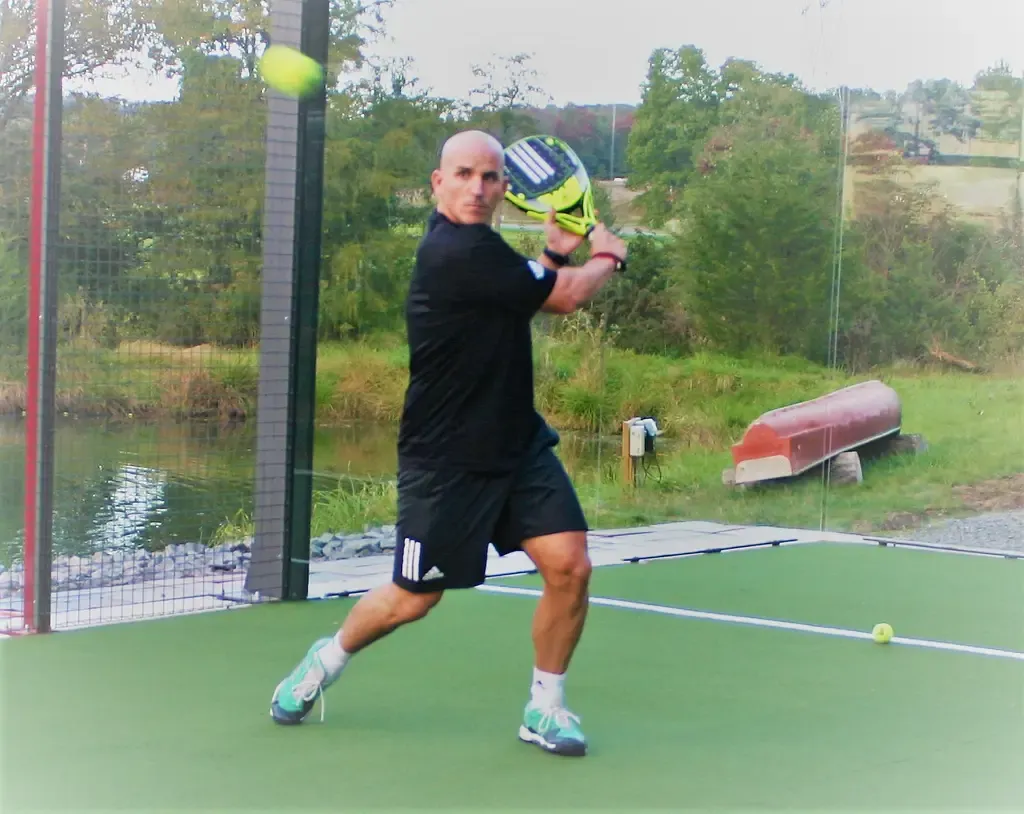

Padel Machine Shot Settings
How to Practice Forehand and Backhand Volleys in Padel:
Overview Volleys in padel involve hitting the ball before it touches the ground. They are typically played close to the net, although you can also hit volleys from the back court glass.
When to Use Volleys
Situation: When you are near the net, but can also be executed from the back court.
Goal: To keep the opponent's partner at the back of the court, force errors, and create open spaces.
Key Elements of Forehand and Backhand Volleys
Positioning: Stay close to the net for optimal volleying opportunities.
Execution: Initially aim for the center of the court where there is more space.
Gradually open up the court with subsequent volleys to create opportunities.
Objective
Primary Goal: Maintain net position, execute effective volleys, and force errors from your opponents.
Tips for Effective Volleys
First Volley Strategy: Aim the first volley to the center of the court.
Positioning: Stay at the net and play a strong air game to win points.
Alertness and Quick Reaction: Be vigilant and ready to react quickly, as the ball will reach you faster at the net.
Net Volley (Warm Up)
To achieve the net volley use the settings on the remote control below for the ball machine. Also below is an image of the machine on the padel court, change and move the machine to suit.
Speed: Full speed
Elevation: Lowest elevation (#1)
Oscillate: Set oscillate to on
Machine Position:
Machine just behind the line on angle to left or right side


How to Defend Corner Shots in Padel:
Overview
Defending in the corner when the ball comes in at an angle and hits the back glass followed by the side glass, or vice versa, requires precise coordination and movement.
Tracking the Ball:
Follow the Ball: Keep your racket and eyes on the ball as it moves from the back glass to the side glass or from the side glass to the back glass.
Body Movement:
Spin and Position: Move your body and spin as necessary to stay aligned with the ball.
Stay Balanced: Maintain balance while spinning to ensure a controlled shot.
Steps to Master Corner Defense
Preparation:
Ready Position: Stand in a ready position, anticipating the angle of the incoming shot.
Racket Placement: Keep your racket up and ready to follow the ball’s trajectory.
Execution:
Track the Ball: Follow the ball with your racket and eyes as it bounces off the glass surfaces.
Spin with Control: Rotate your body smoothly, keeping your eyes on the ball and maintaining balance.
Position for the Return: Adjust your position quickly to be ready for the return shot.
Tips for Effective Corner Defense
Stay Focused: Keep your eyes on the ball and follow its path closely.
Smooth Movements: Practice smooth and controlled body spins to stay balanced.
Consistent Practice: Regularly practice these corner shots to improve your coordination and response time.
Corner Defense Shot
To achieve the corner defense shot use the settings on the remote control below for the ball machine. Also below is an image of the machine on the padel court, change and move the machine to suit.
Speed: Full speed
Elevation: Highest elevation (#5)
Oscillate: Set oscillate to off
Machine Position:
Machine just behind the line on angle to left or right side
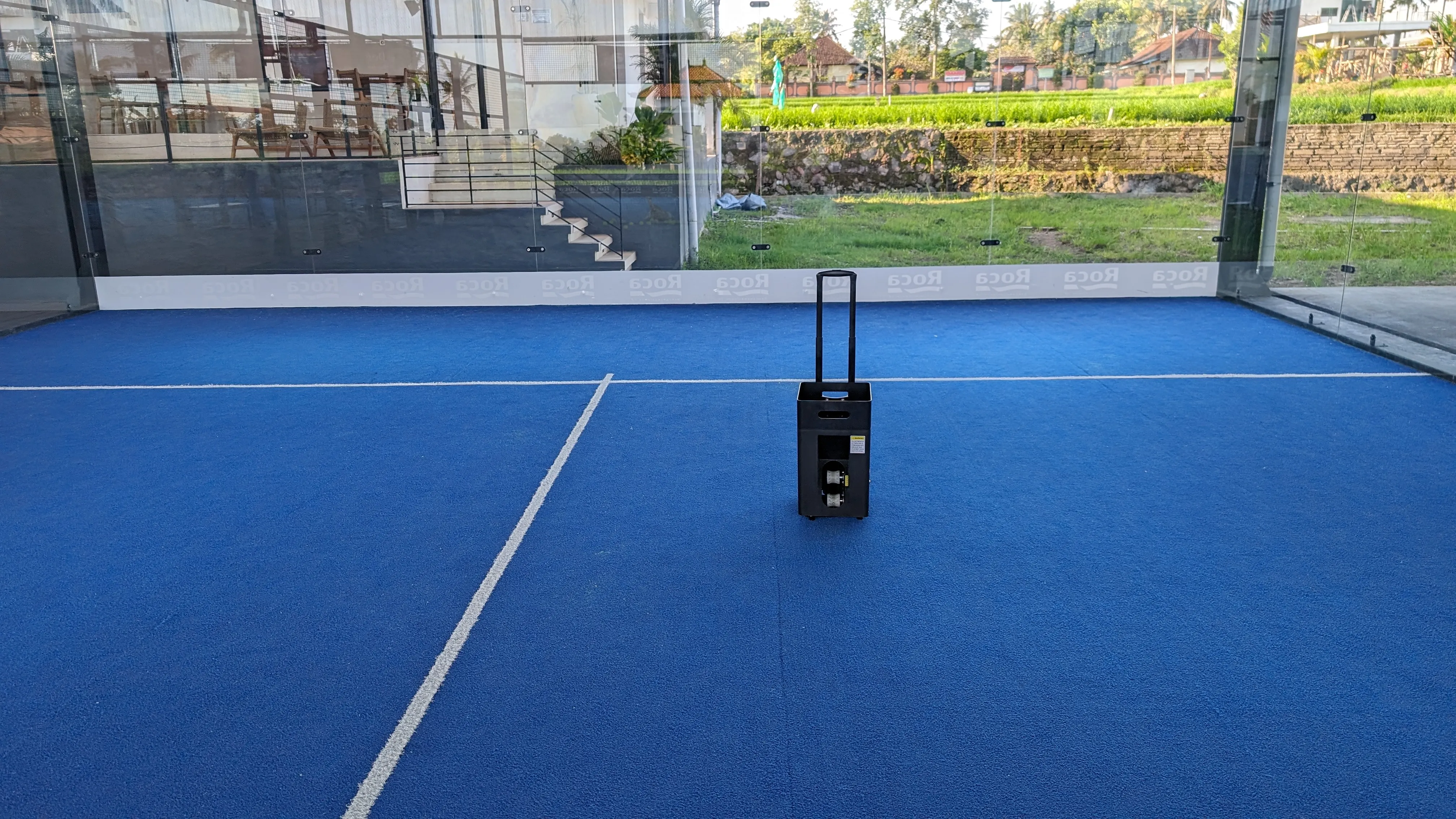
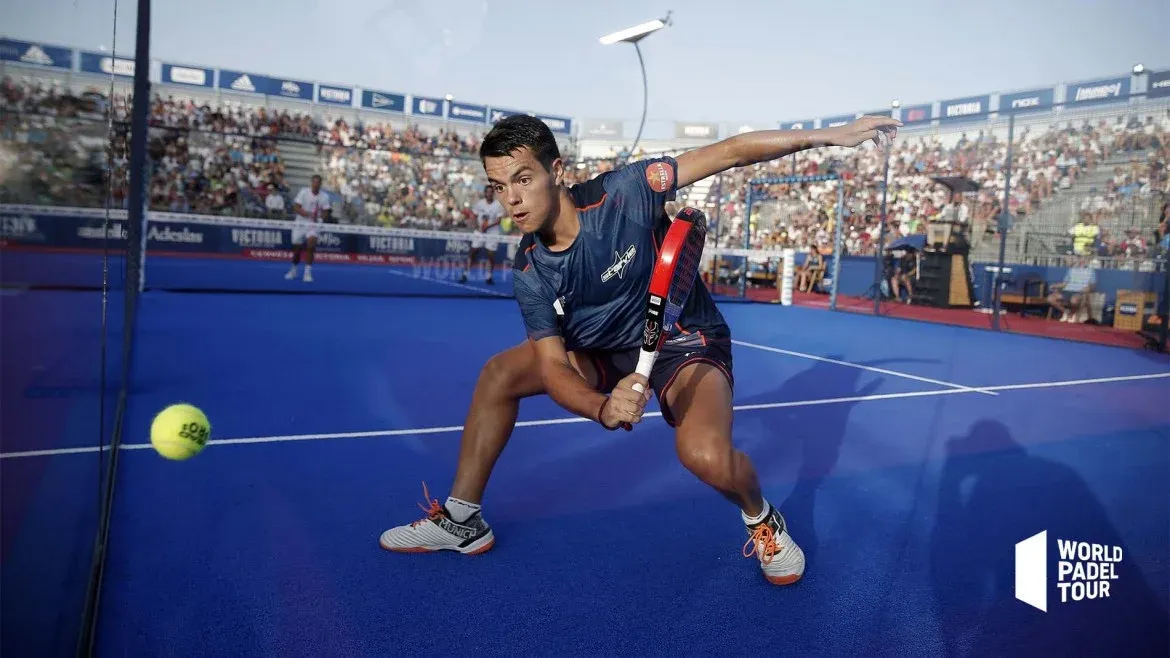
How to Practice the Bajada Shot in Padel:
Overview: The bajada shot in padel can be divided into two types: the "OFF" and the "DOWN" from the wall shot. Understanding and mastering these variations is essential for effective play.
Types of Bajada Shots
OFF the Wall Shot:
Description: A standard shot played off the wall.
Objective: To keep the rally going with a controlled, less aggressive stroke.
Skill Level: Recommended to master this shot before attempting more aggressive variations.
DOWN from the Wall Shot:
Description: A more aggressive version of the off the wall shot.
Objective: To accelerate the ball significantly, aiming to win the point or force an error.
Risk Level: Higher risk due to its aggressive nature, increasing the chances of missing the shot.
Master the OFF the Wall Shot:
Positioning: Stand in a ready position to receive the ball off the wall.
Execution: Focus on a controlled stroke, keeping the ball in play.
Practice: Ensure consistent and accurate shots before moving on to more aggressive plays.
Progress to the DOWN from the Wall Shot:
Positioning: Be prepared to hit the ball aggressively as it comes off the wall.
Execution: Aim to accelerate the ball, targeting to win the point or force an opponent's error.
Practice: Regular practice is essential to reduce the risk of errors and increase the effectiveness of this aggressive shot.
Tips for Effective Bajada Shots
Start with Control: Begin with mastering the OFF the wall shot to build a solid foundation.
Increase Aggressiveness Gradually: Once confident with the standard shot, practice the DOWN from the wall shot, gradually increasing the aggression.
Consistency: Focus on making consistent, accurate shots to build confidence and reduce the risk of errors.
Practice Regularly: Regular practice is key to mastering both variations of the bajada shot.
Bajada Shot
To achieve the bajada use the setting on the remote control below for the ball machine. Also below is an image of the machine on the padel court, change and move the machine to suit.
Speed: Full speed
Elevation: Highest elevation (#5)
Oscillate: Set oscillate to off
Machine Position:
Machine in middle between net and service line, down the middle or on the angle

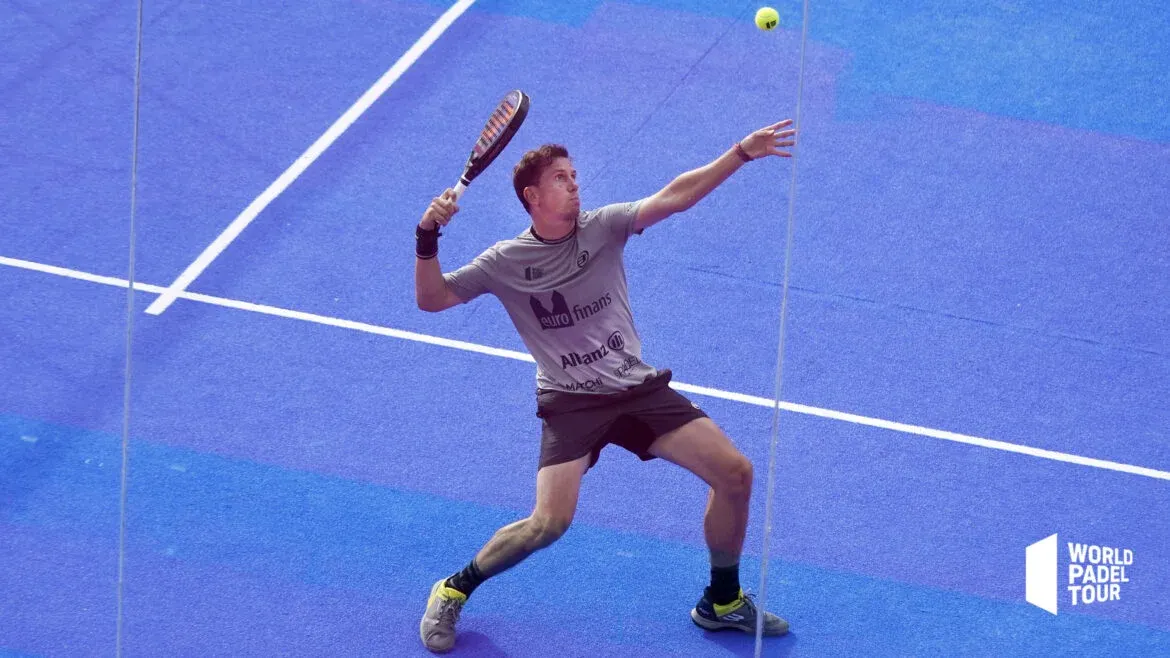
How to Defend in the Cage in Padel:
Overview: Defending in the cage when the ball comes over the net at an angle and hits the cage after the bounce requires quick reflexes and precise positioning.
Key Elements of Defending Cage Shots
Anticipation:
Read the Angle: Anticipate the ball’s trajectory as it comes over the net and bounces towards the cage.
Estimate the Bounce: Predict where the ball will hit the cage after bouncing.
Positioning:
Get Ready: Move quickly to position yourself behind the estimated bounce point.
Racket Preparation: Have your racket out and ready to intercept the ball.
Steps to Master Cage Defense
Preparation:
Stay Alert: Keep your eyes on the ball and read its angle of approach.
Quick Movement: Move swiftly to the side of the court where the ball is heading.
Execution:
Position Behind the Bounce: Align yourself behind the estimated bounce point of the ball.
Racket Ready: Get your racket in position to make contact with the ball after it hits the cage.
Controlled Shot: Return the ball with a controlled shot to keep it in play.
Tips for Effective Cage Defense
Quick Reflexes: Improve your reflexes to react swiftly to angled shots.
Accurate Prediction: Practice estimating the bounce point to position yourself correctly.
Consistent Practice: Regularly practice cage defense to enhance your anticipation and positioning skills.
Cage Defense Shot
To achieve the cage defense shot use the settings on the remote control below for the ball machine. Also below is an image of the machine on the padel court, change and move the machine to suit.
Speed: Full speed
Elevation: Lowest elevation (#1)
Oscillate: Set oscillate to off
Machine Position:
Machine in middle between service line and net and angled across net left or right
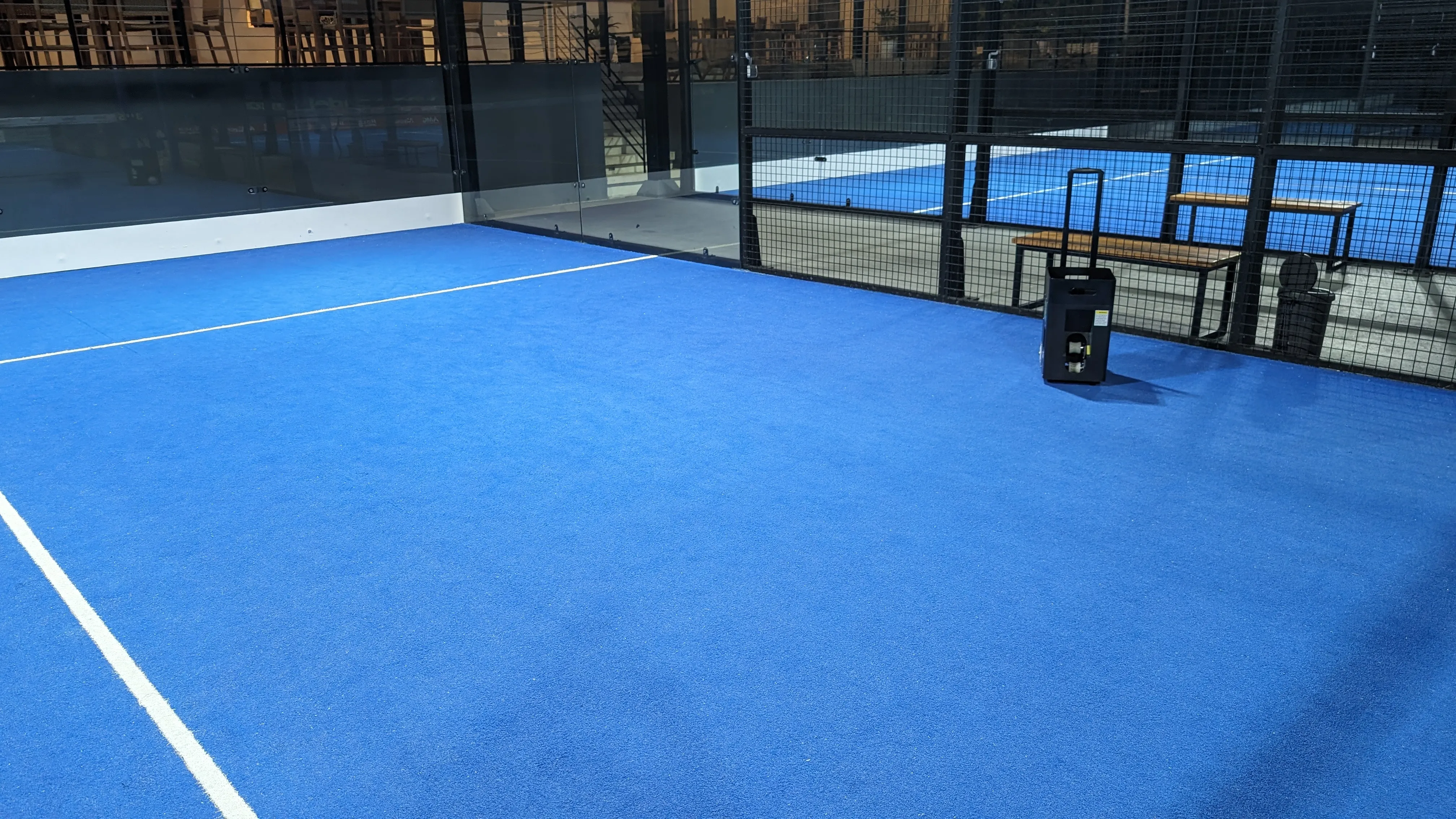
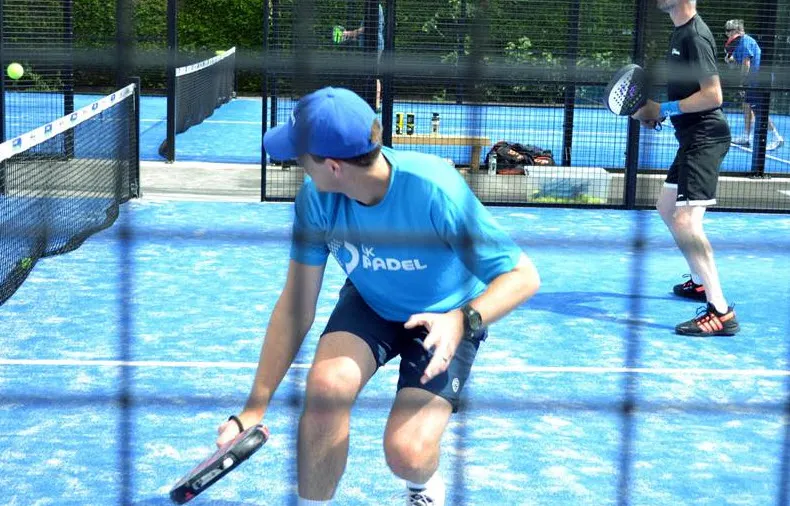
How to Practice Off the Wall Shots in Padel:
Overview: One of the most distinctive features of padel is playing with walls or glass. These elements add both fun and complexity to the game. A fundamental aspect of this is mastering off the wall shots, particularly for back wall defense.
Importance of Off the Wall Shots
Key Element: Off the wall shots are basic yet essential in padel.
Objective: Control the ball with precision to avoid unnecessary risks.
Foundation: This shot is crucial for executing more aggressive returns later.
Back Wall Defense
Positioning: Stand ready to receive the ball off the back wall.
Control: Focus on maintaining control over the ball rather than taking risks.
Execution:
Read the Bounce: Pay attention to the type of bounce, its height, and the distance from the wall.
Adjust Shot: Based on the bounce and opponent’s position, choose the appropriate shot.
Factors Affecting Off the Wall Shots
Type of Wall Shot: Understand whether the shot is a simple bounce or a more complex one.
Bounce Height: Adjust your shot based on whether the ball bounces low or high.
Bounce Distance: Consider how far the ball is from the wall when deciding on your shot.
Opponent’s Position: Take into account where your opponents are on the court.
Tips for Effective Off the Wall Shots
Ball Control: Prioritize controlling the ball to ensure accuracy and minimize errors.
Adaptability: Be ready to adapt your shot based on various factors like bounce type and opponent’s positioning.
Practice: Regularly practice different scenarios to improve your response to various bounces.
Low Bounce Defense Off Rear Glass Shot
To achieve this glass defense shot use the setting on the remote control below for the ball machine. Also below is an image of the machine on the padel court, change and move the machine to suit.
Speed: Full speed
Elevation: Lowest elevation (#1)
Oscillate: Set oscillate to on or off
Machine Position:
Machine between service line and net, down middle or slight angle

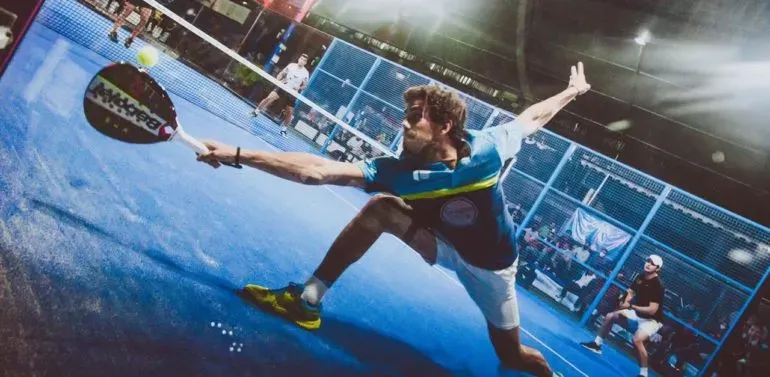
How to Practice the Bandeja Shot in Padel:
Overview: The bandeja is a signature shot in padel, designed to handle mid-height lobs from your opponent. This shot helps you maintain control of the net without compromising your position or risking an easy return for your opponent.
When to Use the Bandeja?
Situation: When facing mid-height lobs that cause uncertainty about letting them bounce or hitting them at an awkward height.
Goal: To avoid losing net position while keeping control of the point.
Key Elements of the Bandeja
Positioning: Stand in the middle of the court. - Position yourself so the ball is at a height between a volley and a smash. Execution: Aim to hit the ball cross-court.
If feasible and not too risky, aim for a double wall to make it harder for your opponent to return the shot.
Objective
Primary Goal: Maintain your position at the net and keep the initiative in the point.
Post-Shot Movement: Quickly return to the net to support your partner, who will likely remain at the net.
Tips for Effective Bandeja Shots
Practice Cross-Court Shots: These are generally safer and more effective in maintaining control.
Focus on Consistency: The aim is not to win the point outright but to ensure you don't lose your advantageous net position.
Quick Recovery: Always move back to the net swiftly after executing a bandeja to maintain pressure on your opponents.
Bandeja Shot
To achieve the bandeja use the setting on the remote control below for the ball machine. Also below is an image of the machine on the padel court, change and move the machine to suit.
Speed: Full speed
Elevation: Highest elevation (#5)
Oscillate: Set oscillate to off
Machine Position:
Machine just behind the line on angle to left or right side

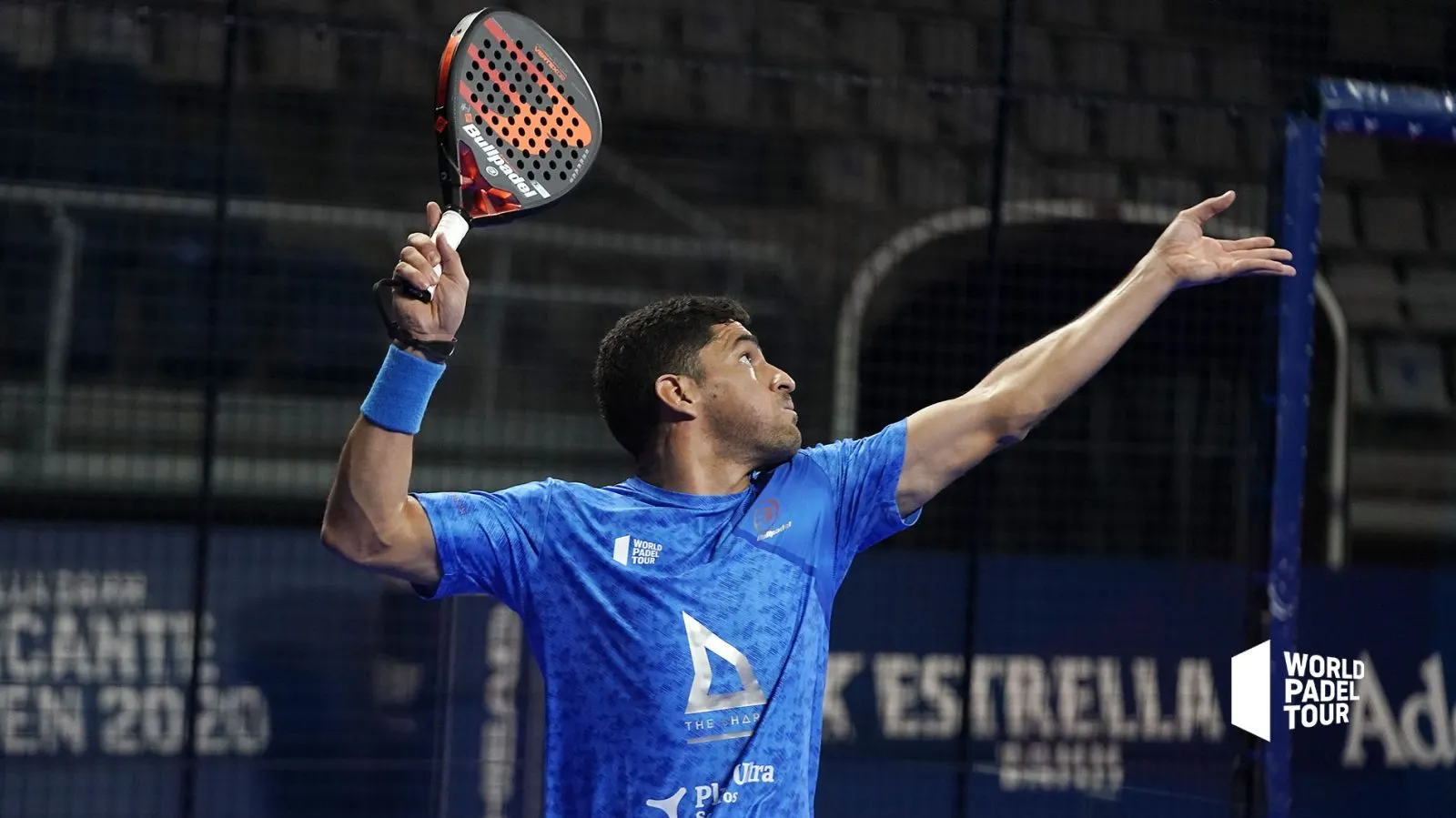
How to Practice Serve Returns in Padel:
Overview: The serve return is one of the most crucial shots in padel. Missing a return means giving away a free point to your opponent.
Importance of the Serve Return
Key Element: The serve return is essential for staying competitive in the game
.Objective: Return the serve accurately to maintain control of the point.
Types of Serve Returns
Flat Shot: A straightforward return with minimal spin.
Chiquita: A soft shot that drops quickly over the net.
Lob: A high shot aimed to push your opponents back.
Understanding the Serve Return
Definition: The serve return is the forehand or backhand shot used to return the opponent’s serve.
Practice: Often overlooked in training, yet both the serve and the return are vital strokes in padel.
Strategy for Serve Returns
Direction: Return the ball down the line or cross-court, depending on the server’s position. This targets the player moving towards the net, who is less well positioned.
Lob Return: Only use a lob return if you have an easy ball and are confident in your execution. A short lob can lead to an opponent's smash and potential point loss.
Characteristics of the Padel Serve
Direction: Serves are typically directed towards the side wall.
Speed: Unlike tennis, the speed of the serve is less critical. The main goal after serving is to reach the net and take control of the point.
Ace Difficulty: It is very difficult to make an ace in padel due to the nature of the game.
Key Elements of Serve Return
Anticipation:
Read the Serve: Anticipate the direction and speed of the serve.
Position Yourself: Move into the correct position to return the serve effectively.
Execution:
Controlled Shot: Choose between a flat shot, chiquita, or lob based on the situation.
Aim for Consistency: Focus on making consistent, accurate returns.
Steps to Master Serve Returns
Preparation:
Ready Stance: Stand in a ready position, anticipating the direction of the serve.
Watch the Server: Keep an eye on the server to read their body language and serve direction.
Execution:
Move Quickly: Adjust your position quickly to meet the ball.
Choose Your Shot: Decide whether to return with a flat shot, chiquita, or lob based on the serve and court positioning.
Controlled Return: Execute the chosen return with control, aiming to keep the ball in play and away from the net or out of bounds.
Tips for Effective Serve Returns
Focus on Control: Prioritize control over power to ensure accurate returns.
Positioning: Position yourself correctly to handle serves directed towards the side wall.
Consistent Practice: Regularly practice different types of serve returns to improve your accuracy and consistency.
Return Of Service Shot
To achieve this return of service shot use the settings on the remote control below for the ball machine. Also below is an image of the machine on the padel court, change and move the machine to suit.
Speed: Full speed
Elevation: Lowest elevation (#1)
Oscillate: Set oscillate to on or off
Machine Position:
Machine between service line and net, down middle or slight angle

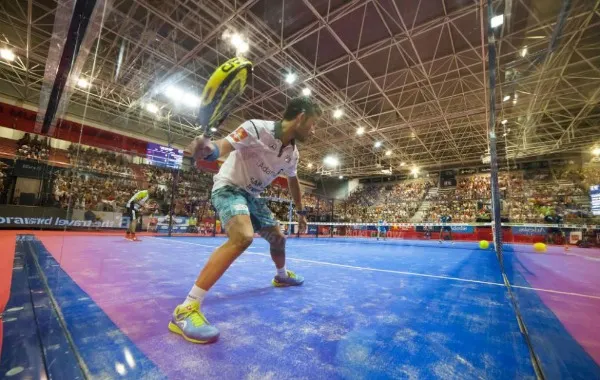
How to Practice the Kick Smash in Padel:
Overview: The Kick Smash is considered one of the most definitive shots in padel. Its primary purpose is to finish the point, so choosing the right moment to execute it is crucial. If not done correctly, it can put you back on the defense or even result in losing the point.
When to Use the Kick Smash
Situation: When you have a clear opportunity to finish the point.
Goal: To win the point outright.
Key Elements of the Kick Smash
Positioning: Aim to hit the ball as high as possible.
Extend your arm and paddle above your head.
Position yourself sideways, distributing your body weight into the stroke.
Execution: Focus on hitting the ball with power and precision.
Direct the shot parallel to the court, making it bounce before the opponent’s service line.
This strategy minimizes the opponent’s reaction time and prevents assistance from their partner.
Objective
Primary Goal: To finish the point decisively.
Shot Placement: Aim for the parallel smash to maximize effectiveness.
Tips for an Effective Kick Smash
Timing: Choose the right moment to execute the kick smash, ensuring a clear opportunity to finish the point.
Height and Extension: Hit the ball as high as possible with full arm extension.
Body Position: Keep your body sideways and weight forward for maximum power.
Shot Direction: Aim for the parallel smash to limit the opponent's defensive options.
Kick Smash Shot
To achieve the kick smash use the setting on the remote control below for the ball machine. Also below is an image of the machine on the padel court, change and move the machine to suit.
Speed: Full speed
Elevation: Highest elevation (#5)
Oscillate: Set oscillate to off
Machine Position:
Machine just in front of service line and down middle or slight angle

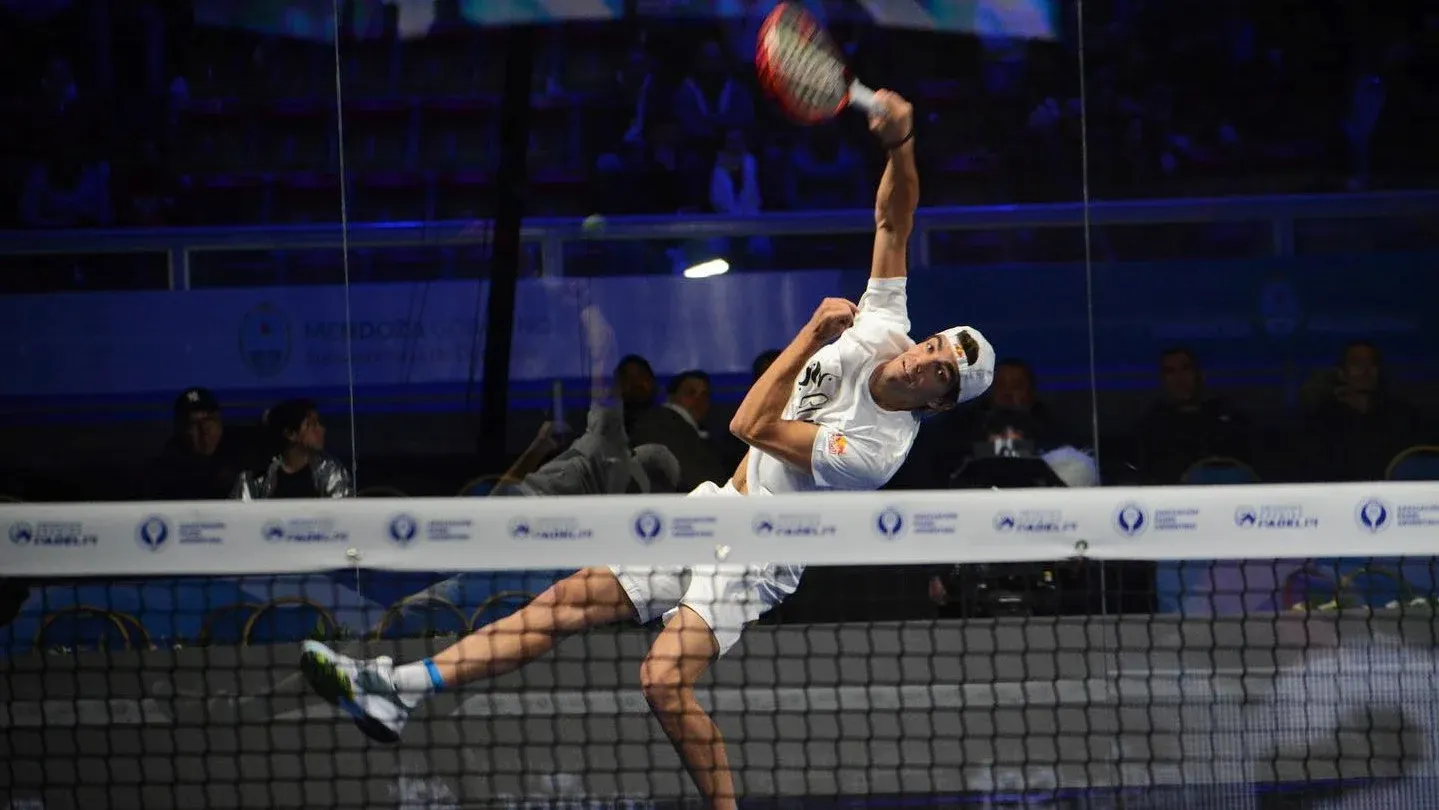
How to Practice The Rulo in Padel:
Overview: The rulo is a soft overhead shot targeting the side fence or side glass. It can push opponents back or, in the best case, result in a dead ball out of the fence.
When to Use the Rulo
Situation: When your opponent lobs the ball over your non-dominant shoulder.
When you want to mix up your shots to keep the opponent guessing.
Goal: To force your opponents back or out of position.
To create confusion and disrupt the opponent’s rhythm.
To capitalize on a softer shot that can still result in a difficult return for your opponent.
Characteristics of the Rulo
Target: Side fence or side glass.
Effect: Forces opponents back or results in a dead ball.
Optimal Position: Easiest when hit over your non-dominant shoulder.
Confusion: Most effective when mixed with other smashes to confuse opponents.
Origin: The term "rulo" comes from the Spanish word for roll or curl.
Steps to Master Rulo
Preparation:
Positioning: Stand ready to receive a lob over your non-dominant shoulder. Body Alignment: Align your body to face slightly sideways, allowing for a smooth overhead motion.
Execution:
Reach Back: Extend your arm back and make contact with the ball behind your head. Topspin Motion: Use a light topspin motion similar to a soft topspin smash. Follow Through: Ensure your follow-through directs the ball towards the side fence or glass.
Mixing Shots:
Combine with Other Smashes: Alternate rulos with other smashes to create confusion for your opponents. Watch Opponent's Positioning: Use the rulo when your opponent is not expecting it, especially after a series of more aggressive shots.
Tips for Effective Serve Returns
Flexibility and Strength: Work on your flexibility and strength to reach back and make controlled contact.
Practice Precision: Focus on hitting the ball with the right amount of topspin and direction.
Observation: Observe professional players like Franco Stupaczuk, who excels at this shot, to understand the nuances and timing.
Rulo Shot
To achieve this rulo shot use the settings on the remote control below for the ball machine. Also below is an image of the machine on the padel court, change and move the machine to suit.
Speed: Full speed
Elevation: Highest elevation (#5)
Oscillate: Set oscillate to on or off
Machine Position:
Machine just in front of service line and down middle or slight angle

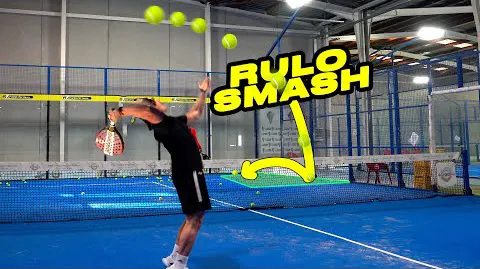
How to Practice the High Backhand Overhead Shot in Padel:
Overview: The high backhand overhead shot in padel involves striking the ball on the non-dominant side of your body with your dominant hand, executing a powerful and controlled finish.
Steps to Master the High Backhand Overhead Shot
Preparation:
Ready Stance: Stand in a ready position with your body angled to receive the ball on your non-dominant side.
Grip Adjustment: Adjust your grip to ensure you have control and can generate power.
Execution:
Swing: Swing the racket across your body, making contact with the ball on your non-dominant side.
Finish: Follow through by swinging and bringing the butt cap up, allowing the racket to recoil. The tip of the racket should point downwards to deliver a powerful shot.
Objective of the High Backhand Overhead Shot
Primary Goal:
Control: Deliver a powerful and controlled shot to keep your opponents on the defensive.
Position: Place the ball in a challenging position for your opponents to return, potentially winning the point.
Post-Shot Movement:
Recovery: Quickly return to a ready position after executing the shot to prepare for the next play.
Positioning: Move towards the net or back to your baseline position, depending on the flow of the game and your strategy.
Tips for an Effective Backhand Overhead
Practice:
Consistency: Regularly practice the high backhand overhead shot to build muscle memory and consistency.
Adjust Your Grip: Grip Position: Experiment with different grip positions to find what works best for power and control.
Watch Your Contact with the Ball: Focus: Keep an eye on the ball and ensure you make contact at the right point for maximum impact.
Adjust Your Standing Position: Stance: Ensure your standing position allows for a smooth swing and follow-through. Angle your body correctly to facilitate the shot.
High Backhand Overhead Shot
To achieve the high backhand overhead shot use the setting on the remote control below for the ball machine. Also below is an image of the machine on the padel court, change and move the machine to suit.
Speed: Full speed
Elevation: Highest elevation (#5)
Oscillate: Set oscillate to off
Machine Position:
Machine just behind the line on angle to left or right side

